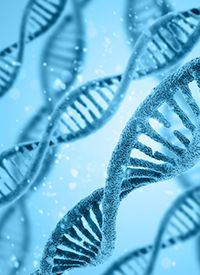Rituximab and Trastuzumab Biosimilars Shown to Have Economic Advantage Over Originators
Jacopo Giuliani, MD, discusses the analysis of the economic impact of biosimilars in breast cancer and follicular lymphoma.

An analysis of the economic impact of biosimilars in oncology and hematology found that biosimilars for rituximab (Rituxan) and trastuzumab (Herceptin) offer economic benefit compared with their reference drugs as first-line treatment in follicular lymphoma and as neoadjuvant breast cancer treatment, respectively, explained Jacopo Giuliani, MD.
The FDA has approved 5 trastuzumab biosimilars: MYL-1401O (Ogivri; trastuzumab-dkst), CT-P6 (Herzuma; trastuzumab-pkrb), SB3 (Ontruzant; trastuzumab-dttb), PF-05280014 (Trazimera; trastuzumab-qyyp), and ABP 980 (Kanjinti; trastuzumab-anns).
Two rituximab biosimilars are also approved by the FDA: CT-P10 (Truxima; rituximab-abbs) and PF-05280586 (rituximab-pvvr; Ruxience). The July 2019 approval of PF-05280586 was based on a comprehensive data package comparing PF-05280586 to reference rituximab and included data from the REFLECTIONS B3281006 clinical comparative study, which showed no clinically meaningful differences in efficacy or safety compared with reference rituximab in patients with CD20-positive, low tumor burden follicular lymphoma.
Several phase III randomized controlled trials (RCTs) were conducted to examine the approved biosimilar and originator indications in neoadjuvant breast cancer and in first-line treatment for advanced follicular lymphoma. The pharmacological costs necessary to get the benefit in cancer outcomes were calculated using time to treatment failure (TTF) and pathologic complete response in biosimilars versus originators.
The analysis evaluated 5 phase III RCTs, which included 2362 patients. Using the cost of drugs from the pharmacy at the Mater Salutis Hospital expressed in euros, biosimilar rituximab versus original rituximab saves around €274 ($304.38) and the trastuzumab biosimilar versus original trastuzumab saves around €3283 ($3647.25) to €6310 ($7010.09) per month for TTF. These data indicate the biosimilar drugs cost about 40% less than the originator.
Therefore, the study concluded that combining pharmacological costs of drugs, and by measuring TTF and pCR, the biosimilars are cost-effective treatments for advanced follicular lymphoma and breast cancer.
In an interview with OncLive, Giuliani, a physician in the Department of Oncology, Mater Salutis Hospital in Legnago, Italy, discussed the analysis of the economic impact of biosimilars in breast cancer and follicular lymphoma.
OncLive: What was the rationale for this analysis?
Giuliani: [I wanted] to assess the pharmacological costs of trastuzumab and rituximab originator versus the corresponding approved biosimilars and their effectiveness of the latter as treatment options. We choose to consider trastuzumab and rituximab as paradigmatic examples, with their greatest impact on drug expenditure in oncology and hematology units, respectively.
How was the trial designed?
Pivotal phase III RCTs were considered for the approved indications in neoadjuvant breast cancer and in first-line treatment for advanced follicular lymphoma. We calculated the pharmacological costs necessary to get the benefit in the cancer outcomes [via] TTF and pCR between the different arms of each trial. Calculations were based on an “ideal patient” (Body surface area 1.8 m2; weight 70 kg). The dosage of drugs was considered according to what is reported in each RCT.
What are the findings of this analysis?
The economic advantage of biosimilars versus originator is [biosimilars are] about 40% less than the originator.
Biosimilars were shown to be cost-effective treatments in oncology and hematology.
Should a similar analysis be done in the United States?
Yes, especially in United States.
What questions still have to be answered regarding biosimilars in Europe?
The price of newly registered oncologic drugs is continuously increasing, posing a serious threat to the sustainability of the National Health Systems, especially in countries where the public control and oversight over the prices is limited. Medical oncologists and the society as a whole are becoming more and more concerned with the issues of the costs to cure patients with cancer. [Medical oncologists] are able to bring attention to the “just price” of new treatments that must reflect the reality of their true benefits, including societal and personal costs.
Are there any other biosimilars in development?
[There are] potentially different monoclonal antibodies and granulocyte [colony stimulating] factors.
Giuliani J, Bonetti A. The economic impact of biosimilars in oncology and hematology: the case of trastuzumab and rituximab. Anticancer Res. 2019;39(7):3971-3973. doi: 10.21873/anticanres.13552.



